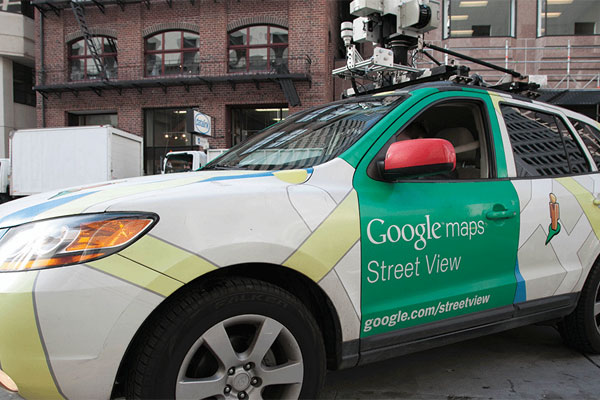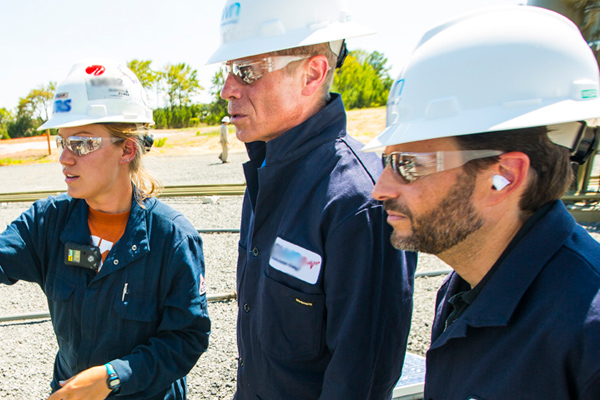Local leaks impact global climate
EDF and Google Earth Outreach team up to pinpoint climate pollution
Natural gas heats our homes and cooks our dinner. But when natural gas — mostly methane — leaks into the air, it's a big problem for the climate.
So EDF and Google Earth Outreach teamed up to build a faster, cheaper way to find and assess leaks under our streets and sidewalks.
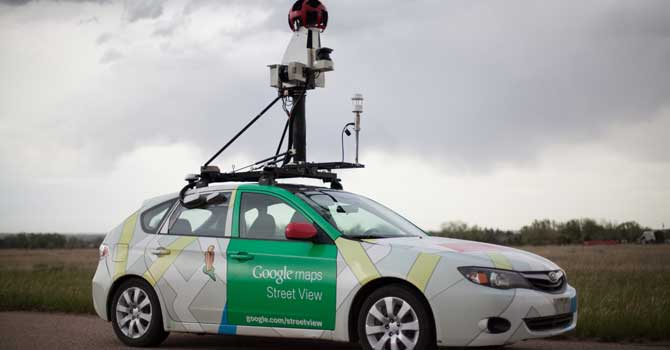
Video: See how we're using Google Street View cars and methane sensors to detect leaks under city streets.
We tested this new approach as part of a pilot program in a dozen cities across the U.S., and in collaborations with PSE&G and Consolidated Edison. Here's what we found.
Mapping results
Boston: Older pipes, more leaks
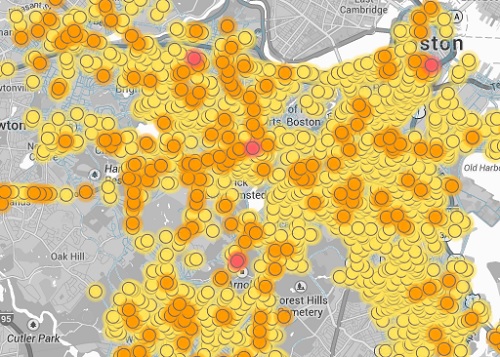
Click for interactive map
Indianapolis: Newer pipes, fewer leaks
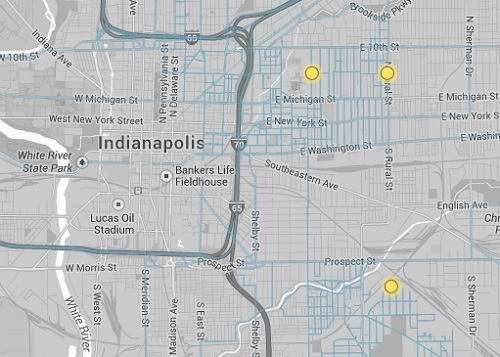
Click for interactive map
City snapshots
The cities where we tested a new way to measure natural gas leaks are a cross-section of America's urban geography.
The maps underscore the persistent and widespread challenge of leaks. They also show the results when utilities and regulators dedicate resources to fix the problem.
Beyond this pilot project, EDF hopes that utilities will publish their own maps to show where they've made repairs and where new leaks are found.
-
Birmingham, AL
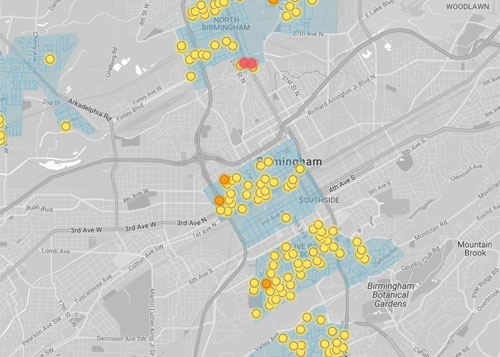
Click for interactive map
Alabama ranks in the top 15 states for most miles of leak-prone pipe. Our readings indicated an average of about one leak for every two miles we drove within the Birmingham study areas.
-
Boston, MA

Click for interactive map
Boston's aging infrastructure is prone to corrosion and leaks. Our readings indicate an average of about one leak for each mile we drove.
-
Burlington, VT
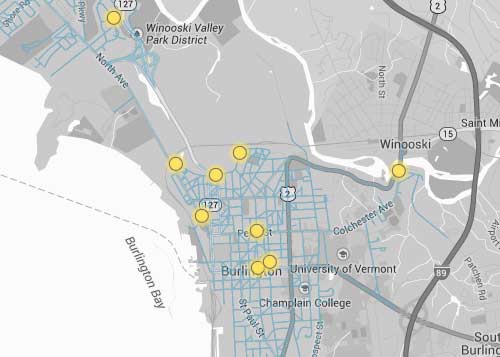
Click for interactive map
Burlington is a smaller system built more recently than others in New England. Our readings indicate an average of about one leak for every 10 miles we drove.
-
Chicago, IL

Click for interactive map
Chicago's partially updated system is still among the oldest in the country. Our readings indicate an average of about one leak for every three miles we drove.
-
Dallas, TX
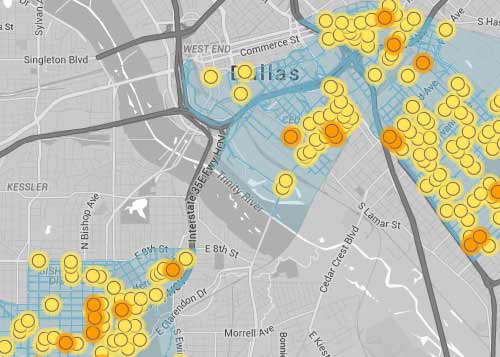
Click for interactive map
Dallas is working to eliminate all cast iron in its system by 2021. In the areas surveyed we found one leak for every two miles we drove.
-
Elizabeth, NJ

Click for interactive map
Our readings for the Elizabethtown Gas service area indicated an average of about one leak for every 1.7 miles we drove.
-
Indianapolis, IN

Click for interactive map
Of the cities we've mapped so far, Indianapolis has the lowest number of leaks per mile driven. Our readings indicate an average of about one leak for every 200 miles we drove.
-
Jacksonville, FL
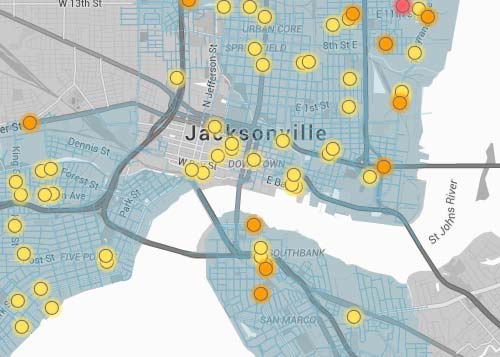
Click for interactive map
Jacksonville has a lower percentage of corrosive and leak-prone pipes than most other cities we have mapped. In the areas surveyed we found one leak for every nine miles we drove.
-
Long Island, NY

Click for interactive map
Most of Long Island’s pipelines are made from cast iron or other leak-prone material. Our readings indicated an average of about one leak for every three miles we drove.
-
Los Angeles area, CA
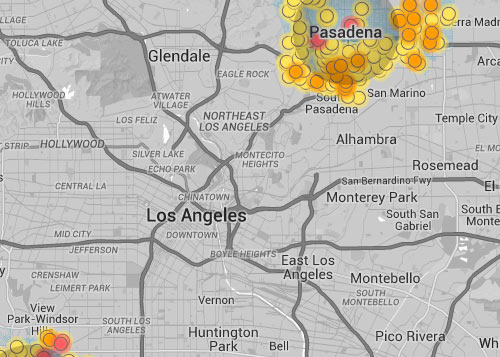
Click for interactive map
We mapped four cities in the Los Angeles area: Chino, Inglewood, Pasadena and Orange. In the areas surveyed we found one leak for roughly every four to six miles we drove.
-
Mesa, AZ
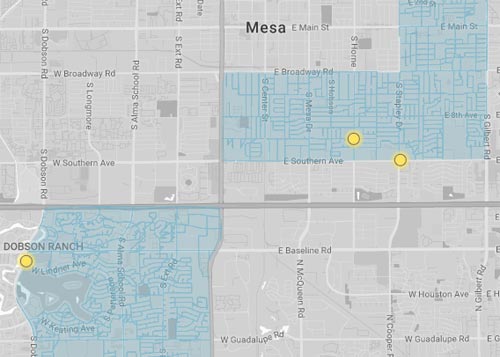
Click for interactive map
Our readings for the City of Mesa Municipal System indicated an average of about one leak for every 60 miles we drove.
-
Pittsburgh, PA
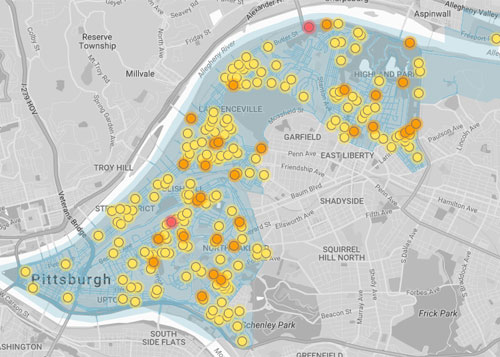
Click for interactive map
Our readings indicated an average of about one leak for every two miles we drove within the study area.
-
Staten Island, NY
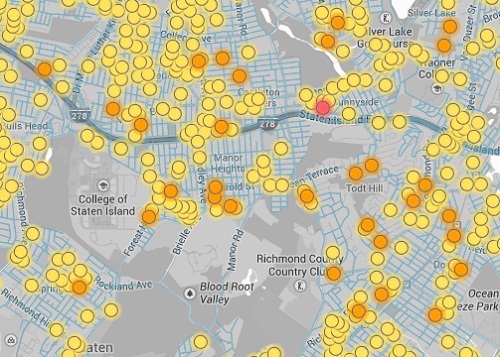
Click for interactive map
New York City has an older infrastructure that includes corrosion-prone cast iron pipes. Our readings indicate an average of about one leak for each mile we drove.
-
Syracuse, NY
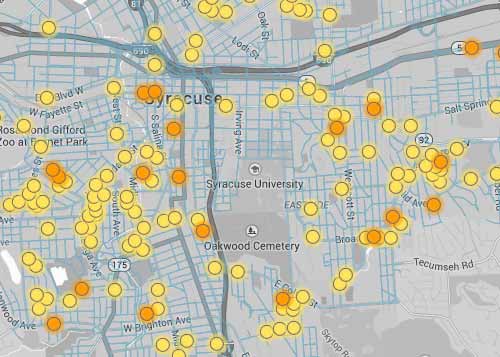
Click for interactive map
More than half of Syracuse's pipes are more than 50 years old. Our readings indicate an average of about one leak for every two miles we drove.











